Editor of this issue: Violeta Kelertas
Copyright © 2000 LITUANUS Foundation, Inc.

|
LITUANUS
LITHUANIAN QUARTERLY JOURNAL OF ARTS AND SCIENCES
Volume 46, No.4 - Winter 2000
Editor of this issue: Violeta Kelertas ISSN 0024-5089
Copyright © 2000 LITUANUS Foundation, Inc. |

|
THE ART OF VIRGINIJA JANKEVIČIUTE-RAGAUSKIENĖ
ALGIMANTAS KEZYS
Succinctly speaking, Virginija's batiks have left an indelible impression on me. Her subject's eyes continue to follow me long after the gallery opening, like the images from a deep and meaningful dream. Her works affect not only the conscious; but also the subconscious, which is the key to understanding the essence of this artist's creativity. At first glance, you see subject, color and composition, not all that different from many other artist's work, but these works have a mesmerizing dimension. The viewer cannot help being overwhelmed, and somewhat oppressed, by the piercing eyes, mysterious personifications and intertwining complex subject and color schemes. Virginija creates portraits of cats, but in reality they are not cats, but indeterminable personifications, whose mystery is hard to deciphersome are naive, others witty, and yet others gloomy. Human forms by no means are meant to represent specific individuals. They are instead concealed emotions that choose not to reveal themselves. The titles do offer some hints: Lonesome, Hopeless, In Disagreement, Loyal, Proud, Painful, Apathy, Wet, Harlequin, In the Crowd. The conceptualization behind each picture gives a deep insight into the expanse of the artist's soul. Here you meet pain, loneliness, unfulfilled promises, and the remnants of shattered hopes. This is only the tip of the iceberg. Each image delves into the deep layers of the artist's psyche, which she keeps hidden, more than likely, purposely.
The most dramatic of this mysterious collection are the portraits of cats and harlequins. The cats' eyes are bright, piercing, but at the same time reveal nothing. What are they concealing? An intangible depth, along with a secrecy that obscures reality. Signs of tragedy emanate from the harlequin's pose: Laugh clown, laugh if you can! And if you can't, then fall laughing into the abyss of existence!
This exposition does not have a self-portrait, although the whole show is images of her soul unmasked: the common denominators of her inner moodsquiet pain, stoic sadness and suppressed tragedy. Virginija paints what she feels. There is no need for logic or rationality. A sudden impulse or emotion not fully deciphered is enough. Dictated images from the subconscious, having surfaced from deeply hidden archetypes? Perhaps the pearls of memories from a past life? Even for her, there remains some ancestral mystery about her work. But one thing is clear, Virginija does not give in to fashion, colorful beauty or any other type of external influences. She paints herself and her deeply furrowed fate and existence. And that is the beauty! No trivial chatter can touch this art! When you step into the space of these paintings, you are overtaken by beauty intertwined in sorrow, and you wouldn't call this sorrow "Weltschmertzerian" or the cry of frightened girl. This artist won't be absorbed or trapped into topics of social injustice or into the contemporary battles of art-world recognition. The beauty remains a tapestry of hidden spiritual pains and sorrows.
There is no reason to question technique. Virginija studied photography, experimented in watercolors, and now works with her own original batik technique. It is apparent that no matter what technique or format she uses, it will be the work of those same hands and the impression of that same soul. There is no need to dwell on the choice of subject. It is irrelevant whether the pictures are still lifes, landscapes, portraits of cats, or spilled wine. They focus on the analogous topicthe unique and most personal soul of ME, Virginija.
Translated from the Lithuanian by Vytenis Rasutis
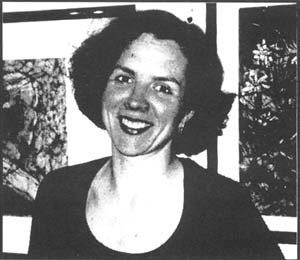
VIRGINIJA JANKEVIČIŪTĖ-RAGAUSKIENĖ, born 1967 in Šiauliai, Lithuania, is a graduate of Kaunas Technical Institute of Art; specializing in photography. While still in attendance at the Institute, she put her work on exhibition in Kaunas. At that time she already had an interest in batik, but an abundance of work in advertisement and design postponed her creative output for approximately 10 years. In 1966 took up her residence in Chicago. In her own words: "I have experimented, improved upon and even invented certain subtleties in my technique, and particularly enjoy comparing and contrasting most recent works with those of 10 years ago. To me batik is a creative synthesis of painting and graphic design. If my works could speak, they would have much to say. This cat may not necessarily be a cat, and this cactus may not actually be a cactus... " Feel free to converse with them, and perhaps this may lead to a pleasant dialogue.
Rasa Ibianskienė
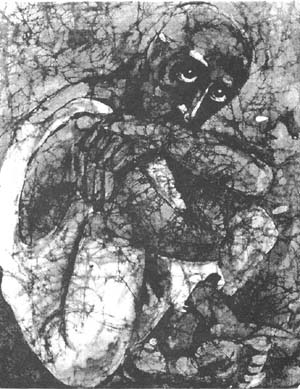
Virginija Jankevičiūtė-Ragauskienė, Framed." 1999, 15" x 19", batik.
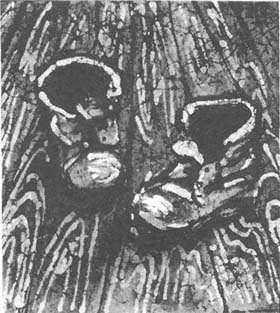
Virginija Jankevičiūtė-Ragauskienė, "Loyal." 1999, 19"x20", batik.
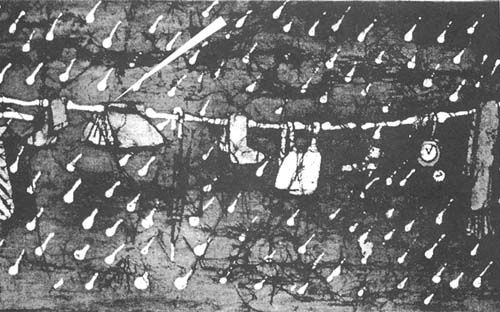
Virginija Jankevičiūtė-Ragauskienė, "Hanging Life." 2000, 9"x15", batik.
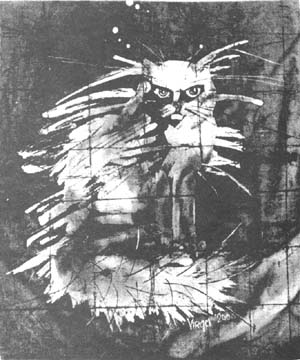
Virginija Jankevičiūtė-Ragauskienė, "Amber," 1999, 16" x 20", batik.
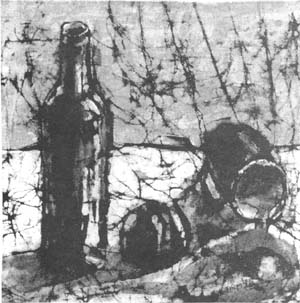
Virginija Jankevičiūtė-Ragauskienė, Still life. 1999, 16" x 16", batik.
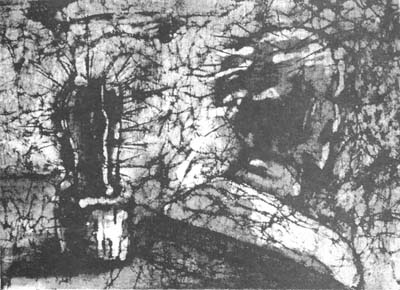
Virginija Jankevičiūtė-Ragauskienė, "Getting into an Argument." 1999, 13" x 18", batik.
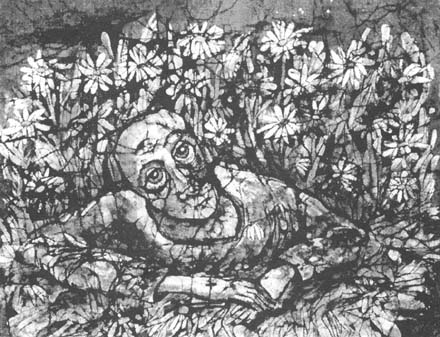
Virginija Jankevičiūtė-Ragauskienė, "In the Field of Daisies." 1999, 15" x 20", batik.
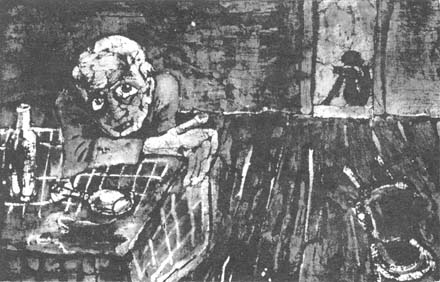
Virginija Jankevičiūtė-Ragauskienė, "Hopeless." 1990, 26" x 43", batik.